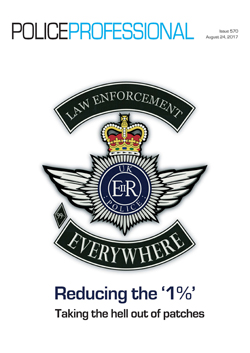View the latest edition online
In this weeks edition, we have news of a police and crime commissioner who has proposed he take over fire service governance because it will prevent savings being diverted to pay for local authority services, we reflect on the Hungerford massacre 30 years on, which led to the UK having the strictest gun laws in the world. There is lots more news, plus features this week include a look into the importance of motorcycle clubs insignia and why police forces need to develop their understanding of the patches, we explore research conducted in three forces on patterns of domestic abuse, an experimental study shows that existing terror threat detection techniques are not working, researchers show how smart devices can be used as a surveillance tool by using soundwaves, and machines have been taught to assess latent fingerprints, saving forensic time and resources. We also look at the arguments about the value of body-worn video following a rollout to almost 50,000 officers.
In this weeks edition, we have news of a police and crime commissioner who has proposed he take over fire service governance because it will prevent savings being diverted to pay for local authority services, we reflect on the Hungerford massacre 30 years on, which led to the UK having the strictest gun laws in the world. There is lots more news, plus features this week include: Feeling the benefit As the rollout of body-worn video is being finalised in many parts of the service at significant cost its value is already being questioned. Police Professional looks at the arguments about measuring their impact. Reducing the 1% Patches worn by motorcycle club members play an important part in rituals, but when seen in the wrong place violence can follow. Police Professional details why law enforcement should understand the importance of the insignia if it wants to increase the number of peaceful participants. Researching abuse Three forces have developed evidence on domestic violence that questions whether escalation in harm is inevitable, identifies a link with perpetrators suicidal markings and proposes improvements in the use of domestic violence protection orders. Sonar surveillance Leonardo da Vinci first used soundwaves to identify moving objects more than 500 years ago, but the technology could now facilitate crime when in the hands of criminals with smart devices. Police Professional reports. Biometric efficiencies Researchers have taught machines to assess latent fingerprints, which could lead to automation of a critical process and save considerable forensic time and resources. Threat detection A terror attack remains a likely event and in the wake of recent events in the UK and Europe all eyes are peeled to spot the signs of the next incident. Scientists believe law enforcement is ill-equipped to do so and are trying to understand how this difficult task can be improved. To view the edition click here


